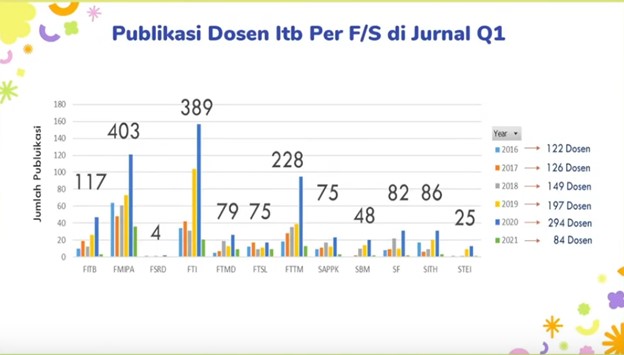ITB Leaders Visits China-Indonesia Joint Research Laboratory for New Energy Materials and Metallurgical Engineering Technology Facilities at Jatinangor Campus
By M. Naufal Hafizh, S.S.
Editor M. Naufal Hafizh, S.S.
JATINANGOR, itb.ac.id – The Rector of Institut Teknologi Bandung (ITB) and other leaders inspected the research and educational facilities at the China-Indonesia Joint Research Laboratory for New Energy Materials and Metallurgical Engineering Technology at ITB’s Jatinangor Campus on Tuesday (3/9/2024). The laboratory was officially inaugurated on Wednesday, 28 August 2024.
The event was guided by Prof. Dr. Ir. M. Zaki Mubarok, S.T., M.T., Head of the PIU (Project Implementation Unit) Team of the laboratory, who is also a lecturer from the Metallurgical Engineering Research Group, Faculty of Mining and Petroleum Engineering (FMPE) at ITB.
The visit started at the Green Hercules statue, which stands 6.9 meters tall, with a base diameter of 3.9 meters and a weight of 7.8 tons. The statue is made entirely from recycled materials, symbolizing ITB’s commitment to sustainability, embodying the concept of a sustainable and green campus.
After that, the leaders passed through a corridor with wood-patterned walls also made from recycled plastic materials. The walls featured various information on the development of metallurgy, under the title"Metallurgy Through Thousand Years: Drive the Wheels of Humankind History to Roll on.”
The visit continued to various research and educational facilities within the China-Indonesia Joint Research Laboratory for New Energy Materials and Metallurgical Engineering Technology. The laboratory houses two Engineering Technology Research Centers: the Hydrometallurgy Engineering Technology Research Center and the New Energy Materials Engineering Technology Research Center.
In addition, there are 12 research laboratories, including:

1. Materials Physical Properties Research Laboratory 1-EPMA
2. Materials Physical Properties Research Laboratory 2-SEM
3. Materials Physical Properties Research Laboratory 3-XRF/XRD
4. Materials Physical Properties Research Laboratory 4-GC-MS/IC
5. Materials Physical Properties Research Laboratory 5-TGA-DSC
6. Materials Physical Properties Research Laboratory-AAS/ICP-MS
7. Chemical Experiment Laboratory
8. Circular Technology and Environmental Technology Laboratory 1
9. Circular Technology and Environmental Technology Laboratory 2
10. Future Power Materials Laboratory
11. Performance Evaluation Laboratory
12. Rare and Rare-Earth Metal Recycling Laboratory
With these facilities, the laboratory builds an innovation system for "exploratory research–small-scale scientific research–semi-industrial experimental research." Furthermore, the laboratory is equipped with over 300 sets of world-class experimental research and testing equipment from Japan, the United States, Germany, and other countries. Some of the equipment here is the only one of its kind in Indonesia, enabling the laboratory to support research on various minerals, new energy materials, resource recycling, and environmental governance.
In addition to research facilities, the laboratory has two multifunctional classrooms and three meeting rooms that can accommodate over 200 people simultaneously for various activities, from teaching to seminars.
These facilities support six main research directions:
1. Green metallurgical technology research on key energy metals and rare metals
2. New energy and key material technology
3. Green recycling of waste resources
4. Energy-saving and environmental protection, tailings management technology
5. Circular economy and carbon reduction technology
6. Strategic research related to sustainable development and ESG
This event was attended by the ITB Rector, vice rectors, deans of faculties/schools, the Head of ITB Internal Control Committee, the Head of ITB Quality Assurance Committee, the Head of Agency for University Endowment Fund and Business Management, the Directors of ITB Jatinangor, Cirebon, and Jakarta Campuses, the Director of ITB Multidisciplinary Science and Technology Applications, the Director of Science and Technology Parks, and the Director of Research and Community Service.
Reporter: M. Naufal Hafiz
Translator: Anggi Nurdiani (Management, 2024)
Editor: Hanifa Juliana (Urban and Regional Planning, 2020)

.jpg)
.jpg)

.jpg)
.jpg)


